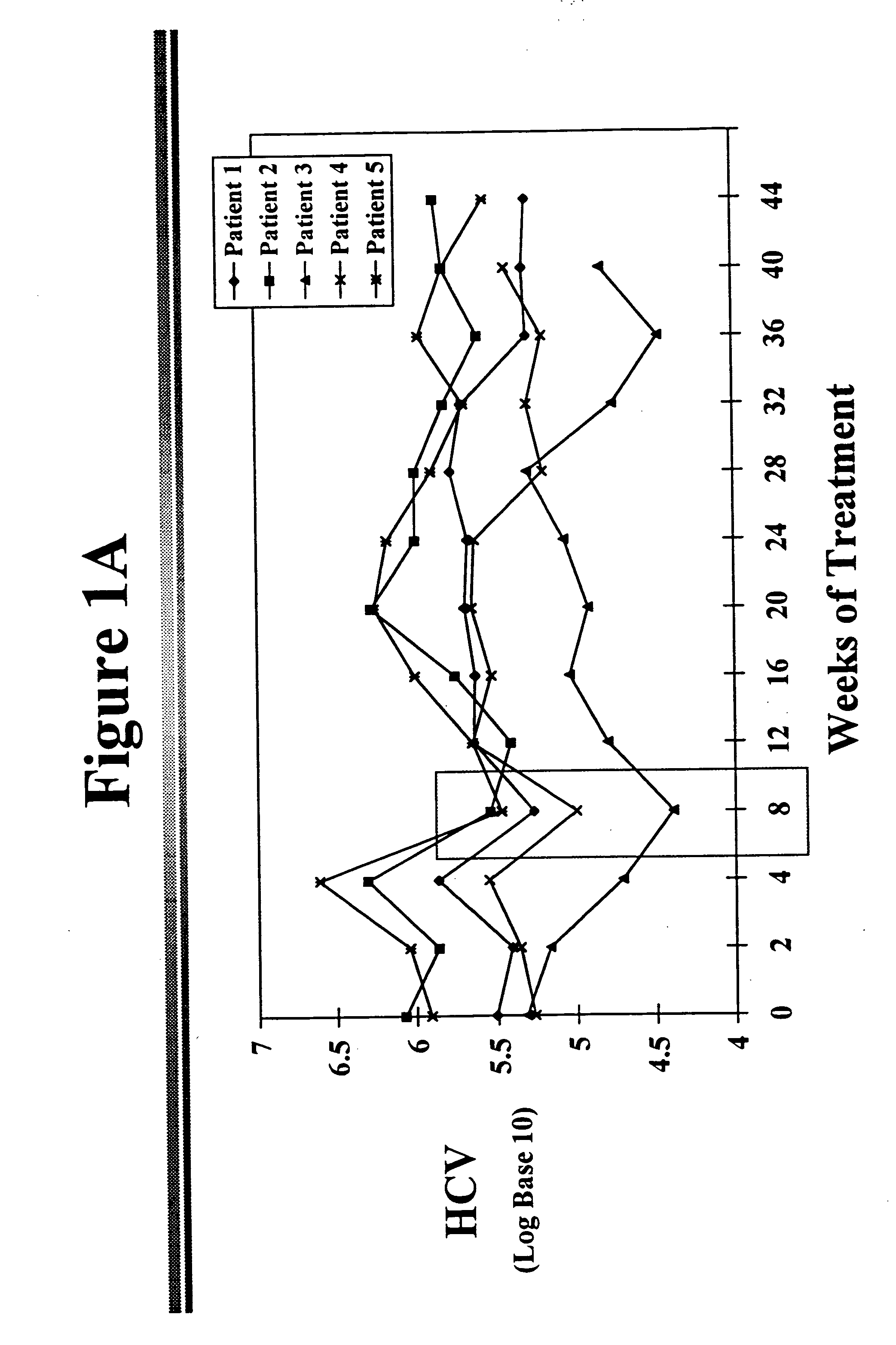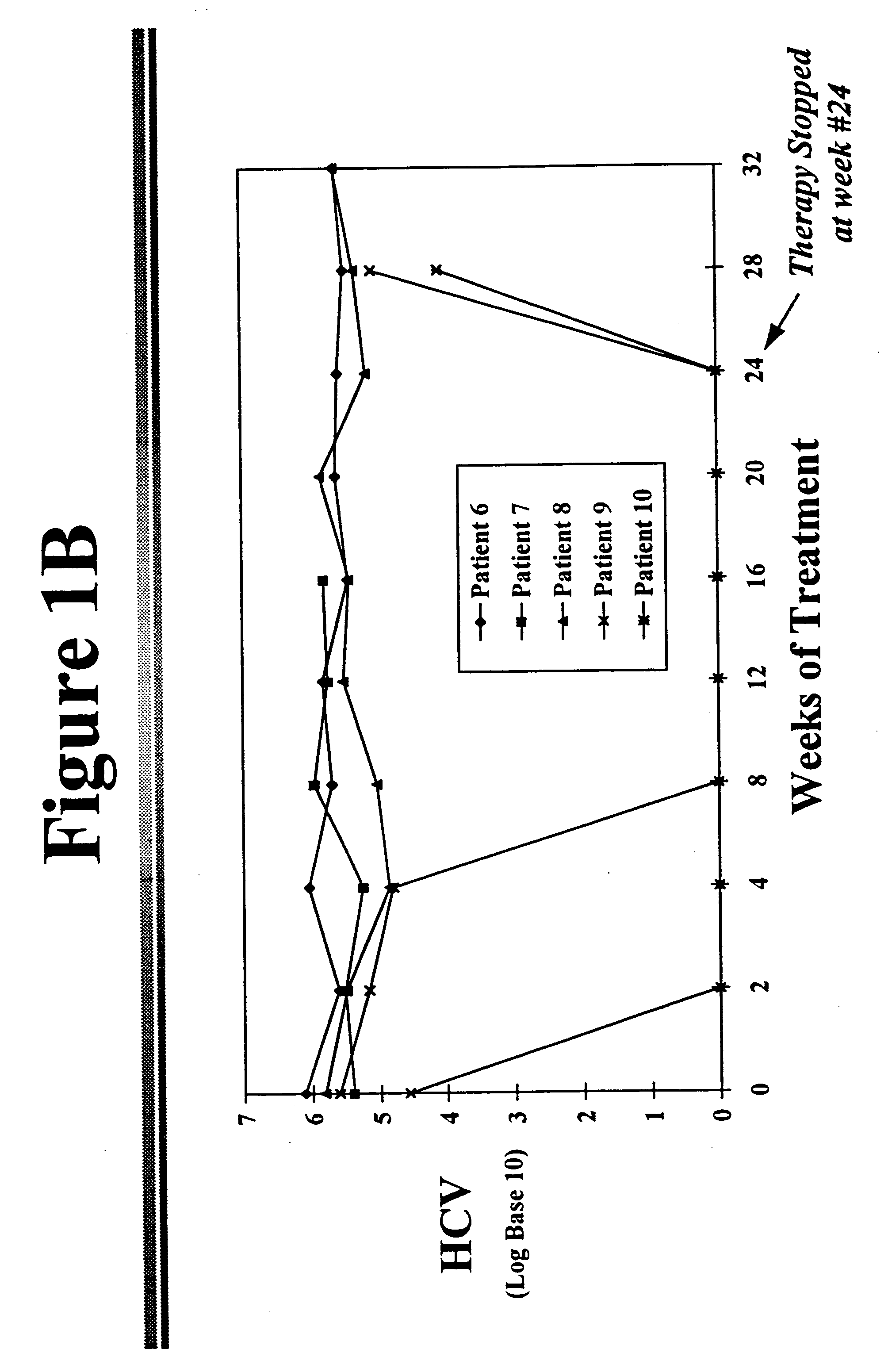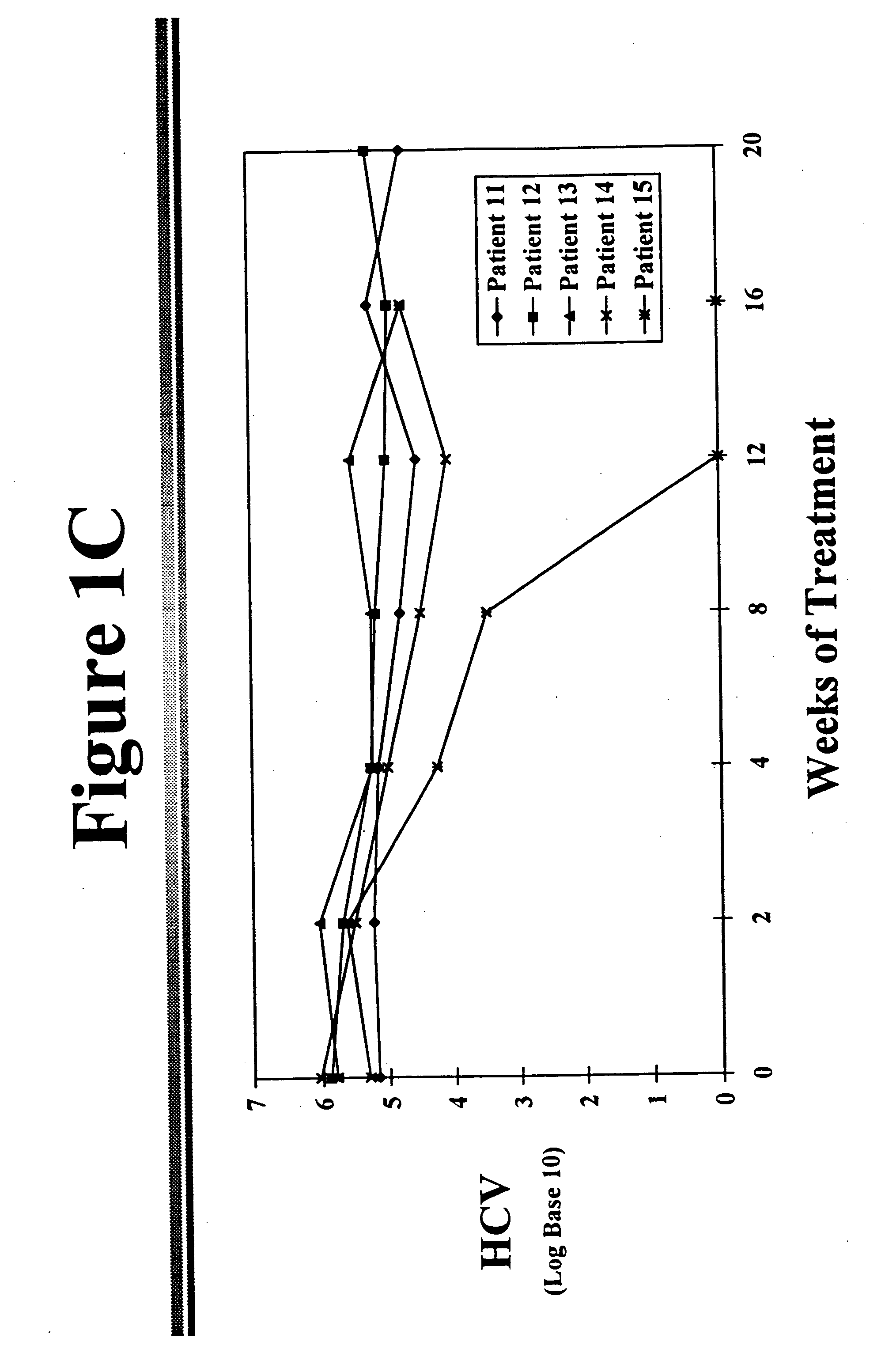Photopheresis treatment of chronic HCV infections
a technology for chronic hcv infections and photopheresis, which is applied in the direction of biocide, other blood circulation devices, drug compositions, etc., can solve the problems of virus inability to replicate, interrupt the spread of virus, etc., and achieve the effect of inhibiting the progression of viral infection and reducing the level or presence of hcv genetic material
- Summary
- Abstract
- Description
- Claims
- Application Information
AI Technical Summary
Benefits of technology
Problems solved by technology
Method used
Image
Examples
example 1
[0041] Reduction of HCV in Chronic HCV Infected Patients
[0042] The fundamental defects that allows establishment of chronic hepatitis C following acute HCV infection are not known. Several investigators have suggested that impaired cellular immunity, either T cells or natural killer cells, may play a role. Weiner and coworkers from the Chiron Corporation have demonstrated the existence of a hypervariable region of the HCV genome in the E2 / NS1 segment..sup.6 This area codes for isolate-specific, B-cell antibody-binding linear epitopes that are expressed on the envelope surface of the HCV particle. The characteristics of this domain are similar to the V3 loop of the human immunodeficiency virus 1's gp 120 protein. The rapid mutation within this region may explain a loss of immune recognition and clearance of the hepatitis C virus.
[0043] Other authors postulate that there may be other possibilities for resistance to interferon treatment. There is evidence that the genotype of the virus...
PUM
 Login to View More
Login to View More Abstract
Description
Claims
Application Information
 Login to View More
Login to View More - R&D
- Intellectual Property
- Life Sciences
- Materials
- Tech Scout
- Unparalleled Data Quality
- Higher Quality Content
- 60% Fewer Hallucinations
Browse by: Latest US Patents, China's latest patents, Technical Efficacy Thesaurus, Application Domain, Technology Topic, Popular Technical Reports.
© 2025 PatSnap. All rights reserved.Legal|Privacy policy|Modern Slavery Act Transparency Statement|Sitemap|About US| Contact US: help@patsnap.com



